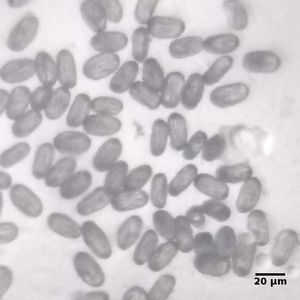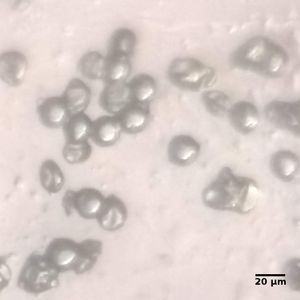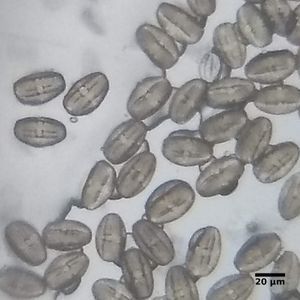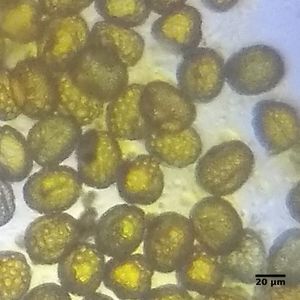A cactus flower!
 Sep 11, 2018 • 11:22 AM UTC
Sep 11, 2018 • 11:22 AM UTC Unknown Location
Unknown Location 140x Magnification
140x Magnification Microorganisms
Microorganisms
varuni
Learn about the author...
21posts
22comments
1locations

At the end of a morning Foldscoping , I noticed a large closed bud (you can see one more in the background if you look carefully).

This is the night blooming Bhramha Kamal (not to be confused with another completely unrelated flower in the Himalayas with the same name). So I waited till the night, and sure enough, there was this lovely bloom:
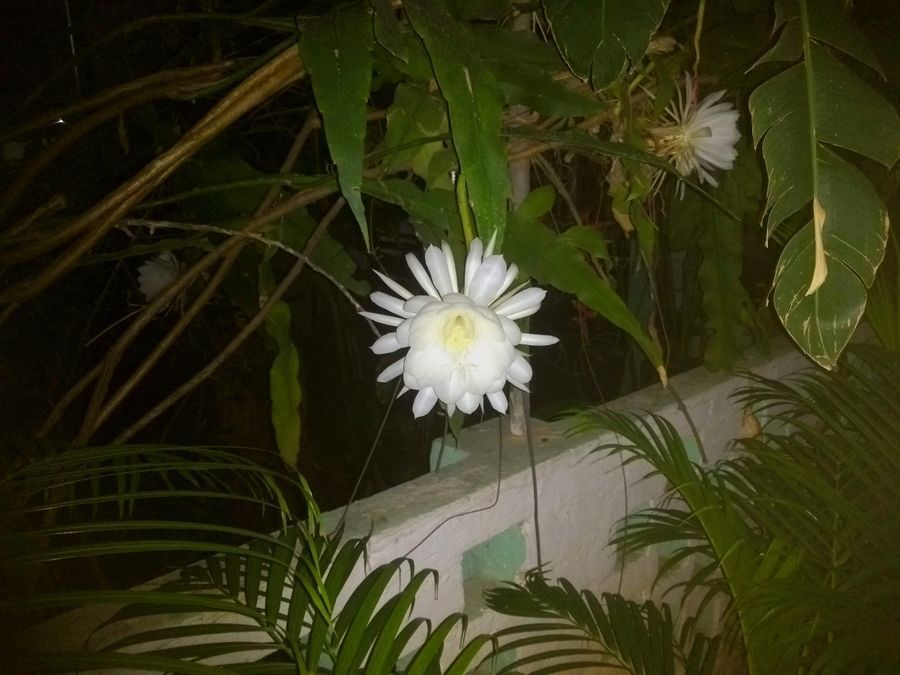
You can see three of them in the image above. Here is a close up view of the stunning flower:
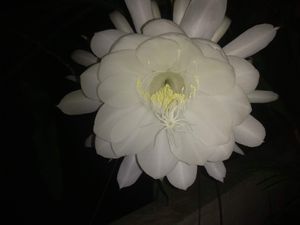
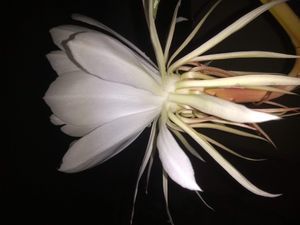
( Epiphyllum oxypetalum )
There’s a small flower-like thing inside the flower which is the stigma. Anthers are many, with lots of large pollen that looks like this:
There’s a small flower-like thing inside the flower which is the stigma. Anthers are many, with lots of large pollen that looks like this:
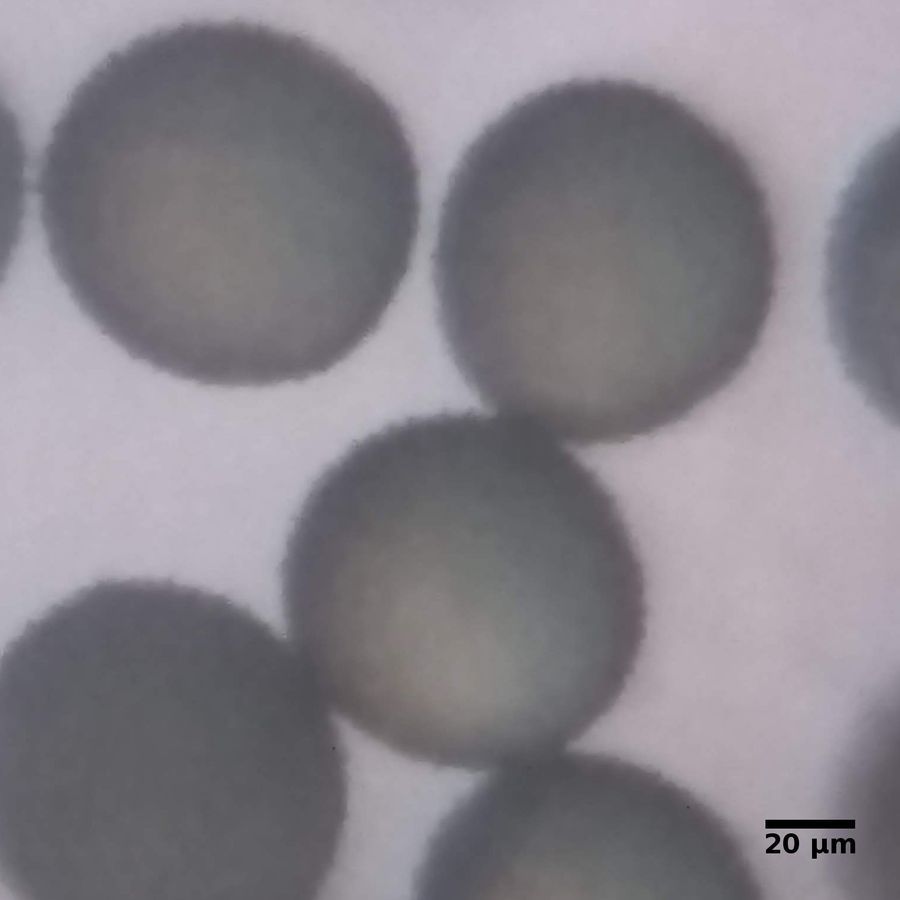
(The pollen grains have a beautiful greenish-purple hue that my phone camera refused to do justice to…)
The flower wilts by morning and ends up like this (although the pollen is still abundant):
The flower wilts by morning and ends up like this (although the pollen is still abundant):
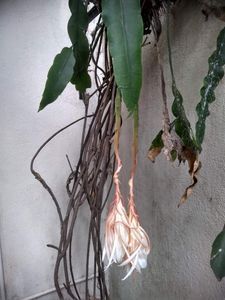
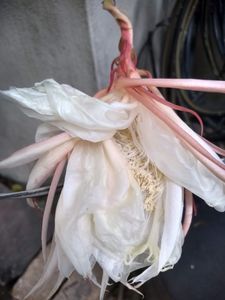
This dramatically flowering plant is a Cactus! Cacti flowers typically have many stamens and a branched stigma just like this one. Cacti are Eudicots and therefore its pollen should be tricolpate — but the furrows in the pollen coat aren’t obvious here. Then I found these really cool SEM images of another
Epiphyllum
species on PalDat showing the detailed furrows as well as a dessicated pollen grain with more obvious colpi.
In previous posts and comments, I have suggested that variation in pollen size/shape could be a result of hydration state. Here that difference seems quite marked. I have saved many of my pollen slides — I am considering going back to them to look at them after dessication. Alternately, as suggested in Kim Weirich’s post , one can also experiment with treating fresh pollen with different types of solutions. Considering pollen is physically resistant enough to show up in fossil records, perhaps we can think of experiments to explore the conformational changes they undergo in different micro environments using Foldscopes?
In the meantime, here’s an interesting fact I learnt: all except ONE species of Cacti are native to the Americas!
PS – Check out a full list of pollen I’ve looked at here:
Pollen list
Epiphyllum
species on PalDat showing the detailed furrows as well as a dessicated pollen grain with more obvious colpi.
In previous posts and comments, I have suggested that variation in pollen size/shape could be a result of hydration state. Here that difference seems quite marked. I have saved many of my pollen slides — I am considering going back to them to look at them after dessication. Alternately, as suggested in Kim Weirich’s post , one can also experiment with treating fresh pollen with different types of solutions. Considering pollen is physically resistant enough to show up in fossil records, perhaps we can think of experiments to explore the conformational changes they undergo in different micro environments using Foldscopes?
In the meantime, here’s an interesting fact I learnt: all except ONE species of Cacti are native to the Americas!
PS – Check out a full list of pollen I’ve looked at here:
Pollen list
Sign in to commentNobody has commented yet... Share your thoughts with the author and start the discussion!
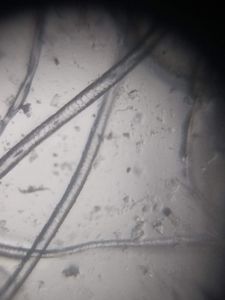
 0 Applause
0 Applause 0 Comments
0 Comments